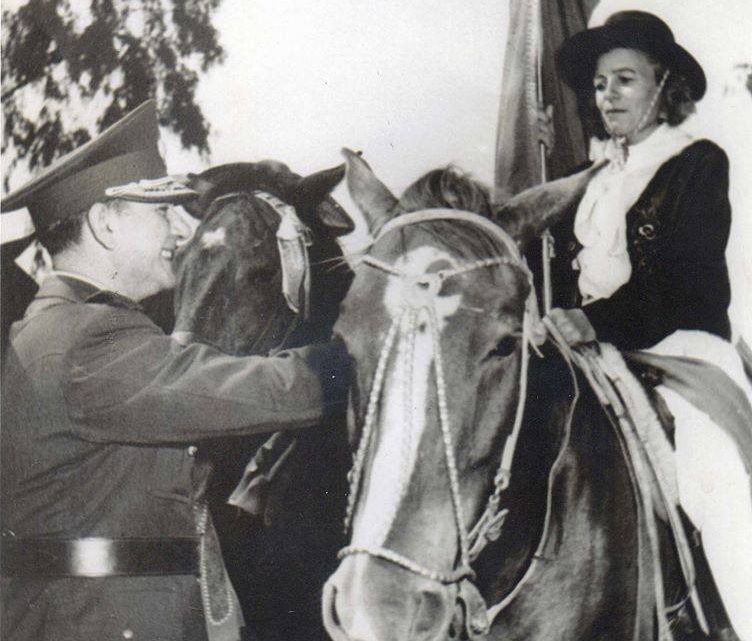Introduction to Cattle Ranches: Life and Tradition on Livestock Ranches


Introduction to Cattle Ranches: Life and Tradition on Livestock Ranches
Cattle ranching has been an integral part of rural life in many parts of the world, symbolizing hard work, tradition, and a deep connection with the land. The vast, open spaces, livestock management, and agricultural practices all contribute to the distinctive lifestyle found on a cattle ranch. Whether in the United States, Latin America, or Argentina, ranching has evolved into a powerful industry and cultural icon.
For many, visiting a cattle ranch offers a glimpse into this unique lifestyle. It’s a chance to step away from city life, experience nature, and immerse oneself in traditions that have been passed down through generations. In Argentina, cattle ranches are known as estancias, and they offer a blend of history, livestock management, and cultural experiences that attract tourists from around the world.
The History of Cattle Ranching and Its Evolution
The practice of cattle ranching dates back centuries, evolving significantly over time. Ranches were initially established as a means of managing livestock for meat, milk, and other resources. In Argentina, cattle ranching began to flourish during the 19th century, as large expanses of fertile land provided the perfect environment for raising cattle.
During this period, the traditional figure of the gaucho emerged—a symbol of the Argentine cowboy who worked the vast pampas and cared for cattle. Gauchos played a vital role in the management of herds, and their customs and skills are still revered in today’s cattle ranching culture.
With advancements in technology and agricultural practices, cattle ranching has modernized, but its core values of hard work, self-sufficiency, and a close relationship with the land remain intact. Visitors to Argentine estancias today can still experience a glimpse of this traditional lifestyle.
Cattle Ranching in Latin America: The Importance of Ranches in Argentina
In Latin America, and especially in Argentina, cattle ranching holds tremendous economic and cultural importance. The country’s vast plains, known as the Pampas, provide the perfect landscape for large-scale ranching operations. Argentina is one of the world’s leading beef producers, with cattle ranches forming the backbone of its agricultural sector.
For those visiting Buenos Aires, the nearby estancias offer a window into rural life. These ranches are more than just agricultural hubs; they are centers of culture, where visitors can learn about Argentina’s history, traditions, and connection to the land. At Camino Pampa, for example, guests can participate in authentic Argentine asados (barbecues), learn about livestock management, and even ride horses across the sprawling fields, experiencing the natural beauty of the Pampas firsthand.
Rural Tourism in Buenos Aires: A Unique Experience with Camino Pampa
At Camino Pampa, we pride ourselves on offering foreigners a truly immersive experience in Argentine ranch life. Our estancia near Buenos Aires is an ideal spot for those looking to escape the city and experience something entirely different. From guided tours around the ranch to hands-on activities like cattle herding and horseback riding, we tailor our experiences to give each visitor a personal connection to the Argentine countryside.
We’ve found that many of our guests, who are often from urban environments, are fascinated by the simplicity and authenticity of ranch life. Walking through the fields, watching the cattle roam freely, and engaging in local traditions provide a refreshing contrast to modern life. It’s more than just a tour; it’s about creating memories that highlight the deep bond between humans, animals, and nature.
Daily Life on a Cattle Ranch: Traditions and Customs
Life on a cattle ranch follows a rhythm deeply tied to the land and the animals. The day often starts early, as ranchers tend to the needs of their livestock. Cattle must be fed, pastures checked, and fences maintained. Depending on the season, there may be tasks like branding, vaccination, or rounding up cattle for market.
At Camino Pampa, we introduce our visitors to these daily routines, allowing them to witness and sometimes participate in the tasks that keep a ranch running. One of the highlights for many is learning about the role of the gauchos, whose skills in horseback riding and cattle management are essential to the ranch. We show our guests how these traditions have been preserved over centuries, offering a true connection to Argentina’s cultural heritage.
The Role of Cattle in Ranching: A Pillar of Livestock Management
Cattle are the heart of any ranch, and managing these animals is both a science and an art. In Argentina, cattle ranching is about more than just raising animals for beef—it’s about sustainability, environmental stewardship, and the care of the land.
At Camino Pampa, we teach our guests about the intricacies of livestock management. From pasture rotation to ensure the health of the land, to the careful breeding practices that maintain the quality of the cattle, every aspect of ranching is vital. Our visitors often leave with a deeper understanding of the care and precision required to maintain a healthy, sustainable cattle ranch.
Field Experiences for Foreigners: Connecting with Nature in Buenos Aires
Foreign visitors to Camino Pampa often comment on the profound sense of peace they feel during their time on the ranch. The vast, open spaces, the sounds of the animals, and the endless horizon all contribute to an experience that is both relaxing and invigorating.
For many, activities like horseback riding or hiking through the Pampas are a highlight of their visit. These experiences allow them to connect with nature in a way that feels authentic and unhurried. Whether they’re learning to ride for the first time or watching a herd of cattle move across the fields, visitors are given a rare opportunity to slow down and appreciate the beauty of the rural landscape.
Why Choose a Cattle Ranch in Argentina: Benefits of Rural Tourism
Rural tourism, particularly on cattle ranches, offers a unique blend of adventure, relaxation, and education. Choosing an estancia like Camino Pampa allows visitors to experience a side of Argentina that they won’t find in the bustling city of Buenos Aires. From the rich history of the gauchos to the incredible culinary experiences (like an authentic Argentine asado), a stay at a cattle ranch is both a cultural and sensory delight.
Moreover, rural tourism promotes sustainable travel. By supporting local ranches, tourists help preserve the traditions and livelihoods of rural communities, while also promoting responsible tourism that respects the land and its inhabitants.
The Future of Cattle Ranching: Sustainability and Cultural Preservation
The future of cattle ranching in Argentina, as in many other parts of the world, hinges on sustainability. As global demand for meat rises, ranches must balance production with environmental stewardship. At Camino Pampa, we’re committed to practices that protect the land for future generations while also preserving the cultural heritage of cattle ranching.
For visitors, this means a chance to see firsthand how traditional methods are being adapted to meet modern challenges. Our tours often include discussions about sustainability and the ways in which ranches like ours are working to reduce environmental impact while maintaining the integrity of our livestock and land management practices.
Share in socials
WANT TO KNOW THE 'GAUCHO ARGENTINO'? BOOK A TOUR!
You may also be interested in:

Why This Gaucho Experience Stands Out from Other Estancia Tours in Buenos Aires
Some people have been asking us about our higher price compared to other Gaucho/Estancia Tours in Buenos Aires.You’ve probably traveled…
Ana Beker: The Horsewoman Who United the Americas on Horseback
More than 70 years ago, when GPS and social media didn’t exist, an Argentine woman embarked on a journey that…
Estancia Vigil: A Testament to Argentine Winemaking Excellence
How did Alejandro Vigil's journey in winemaking begin? Alejandro Vigil's passion for viticulture ignited during his formative years in Mendoza,…



